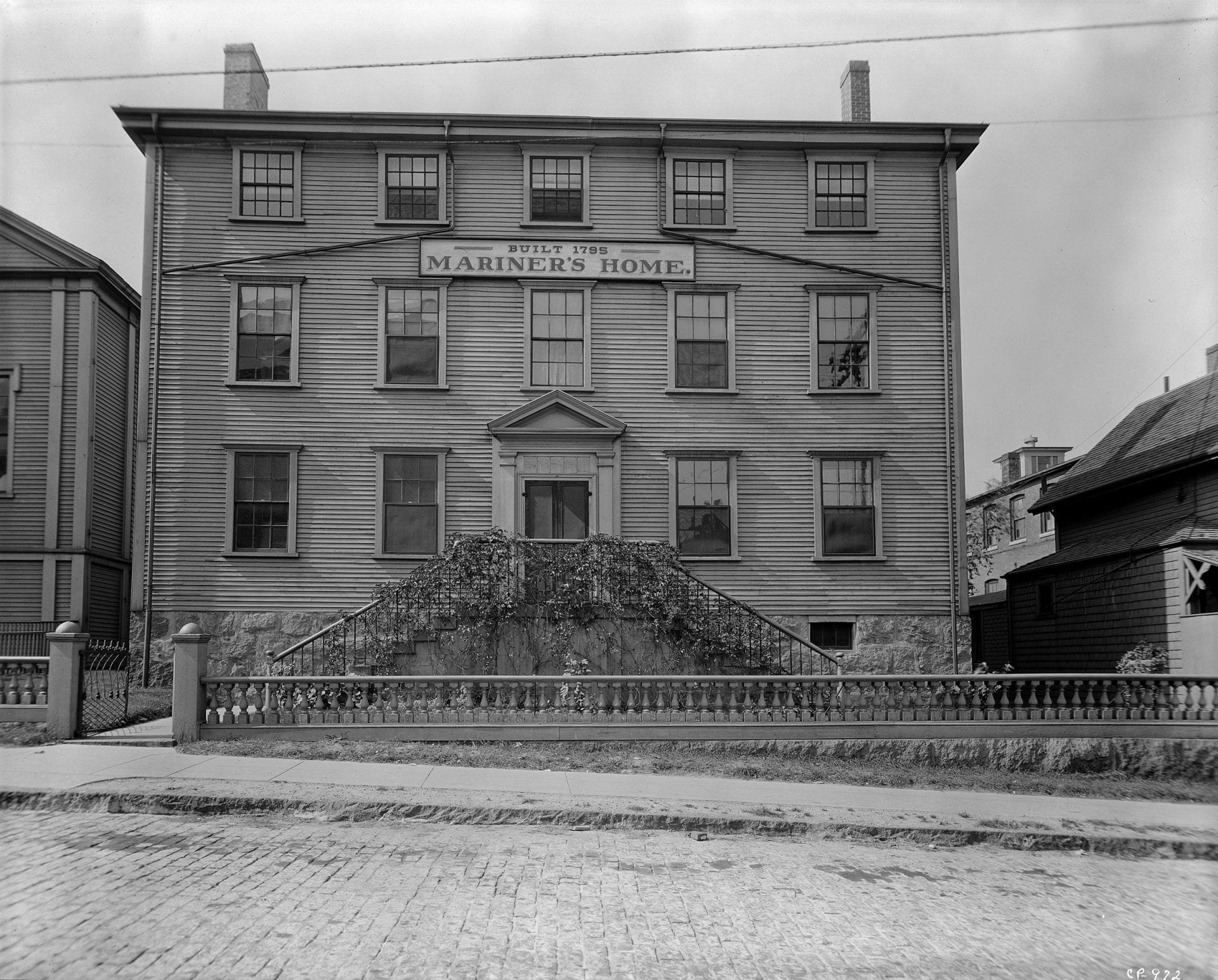The Historic Mariners’ Home
Opened: April 21, 2017
Closed: April 5, 2019
The New Bedford Whaling Museum curated four exhibitions on the first floor of the Mariners’ Home that brought to life the era when the boarding house was bustling with maritime guests and told the story of how the Mariners’ Home came to be. Highlights of the exhibition included:
Moby-Dick and the Silver Screen
This exhibition told the story of Moby-Dick’s rise in popular culture during the twentieth century through the powerful medium of film. Several motion picture versions of Herman Melville’s great work, as well as other maritime pictures, depicted the grisly business of whaling through the lens of Hollywood. New Bedford’s image on the silver screen generated long-lasting international attention. In particular, director John Huston’s 1956 version of Moby-Dick starring Gregory Peck, fostered renewed local pride in the city’s past and helped to stimulate community-wide interest in historic preservation.
The Home of William Rotch Jr.
An exploration of what the salon of the home would feel like in the early 19th century when it was the family home of William Rotch Jr. Visitors could view the furniture, art, and artifacts that would have graced the walls and hallways of the Rotch home.
Safe Haven, Safe Harbor
An exhibit about William’s daughter Sarah Rotch Arnold and the Ladies Branch of the New Bedford Port Society, and their historical significance to the creation of the Mariners’ Home. Visitors could relive the welcomed respite that mariners received in New Bedford’s Port and the Mariners’ Home.
Just as the broad harbor of the Port of New Bedford afforded excellent shelter from northeast gales, the Mariners’ Home was widely known as a safe haven for transient mariners from arriving ships. Both the Harbor and this Home offered a safe berth, restorative sustenance, and a much-needed rest before the next ocean voyage. In display was also the history of the harbor’s lighthouses and hurricane barriers as they created a safe haven for vessels and the souls aboard.
Safe Haven, Safe Harbor
An exhibit about William’s daughter Sarah Rotch Arnold and the Ladies Branch of the New Bedford Port Society, and their historical significance to the creation of the Mariners’ Home. Visitors could relive the welcomed respite that mariners received in New Bedford’s Port and the Mariners’ Home.
Just as the broad harbor of the Port of New Bedford afforded excellent shelter from northeast gales, the Mariners’ Home was widely known as a safe haven for transient mariners from arriving ships. Both the Harbor and this Home offered a safe berth, restorative sustenance, and a much-needed rest before the next ocean voyage. In display was also the history of the harbor’s lighthouses and hurricane barriers as they created a safe haven for vessels and the souls aboard.
A Working Port
For more than three centuries commercial fishing has been integral to life in New Bedford. In the 19th century, the whaling industry made New Bedford the wealthiest city in the country and provided the infrastructure to support a major industrial port. Today, men and women continue to wrest their livelihood from the oceans off New England.
Thanks to their efforts, the seafood landings in the Port of New Bedford have been the most profitable in the nation since 2000. This exhibit explored the vibrant Port of New Bedford that includes commercial fishing, shipping, recreational boating, cruise lines, ferries, and in the near future a hub for the off-shore wind industry.
A Brief History of the Mariners’ Home
William Rotch Jr. moved to New Bedford from Nantucket around 1789 to take over the New Bedford branch of the family sperm whaling business.
In 1790 he and his wife Elizabeth built a new home on the corner of William and North Water Street on the site of his grandfather Joseph Rotch’s house. Joseph, who helped pioneer the colonial whalefishery of Bedford Village, died in 1784. His house had been burned by the British during the American Revolution. William and his family lived in the house on the corner of William and Water streets until they moved up the hill to County Street in 1834.
From 1834 to 1850, William Rotch Jr. rented his home for a variety of commercial uses. After his passing in 1850, William’s daughter Sarah Rotch Arnold donated the home to the New Bedford Port Society. It was moved up to Johnny Cake Hill and placed next to the Seamen’s Bethel, where it became known as the Mariners’ Home.
Since 1851, the Mariners’ Home was operated by the Ladies Branch of the New Bedford Port Society for the Moral Improvement of Seamen (established in 1830). The Home served as a safe and moral boarding house for whalers, fishermen, and other mariners in the Port of New Bedford. The Mariners’ Home was purposefully located close to the Seamen’s Bethel (built in 1834) where sailors could hear sermons and gain reassurance and inspiration before setting off on their long voyages. Well into the 21st century the Mariners’ Home provided a haven for New Bedford’s seamen.


